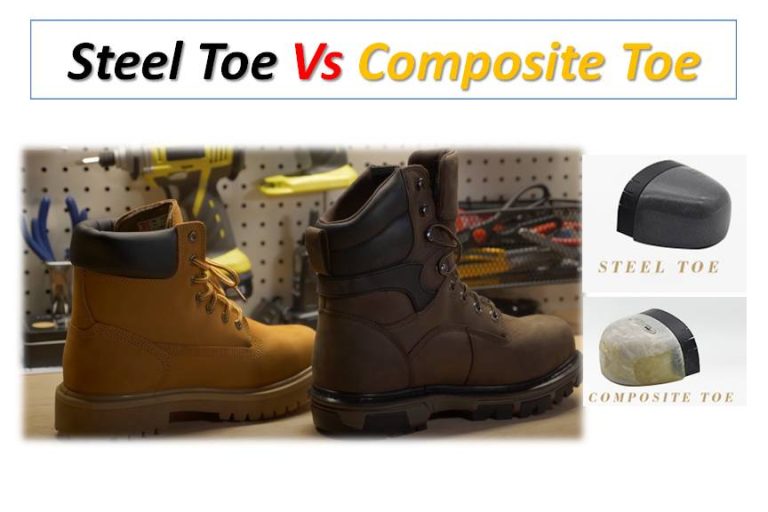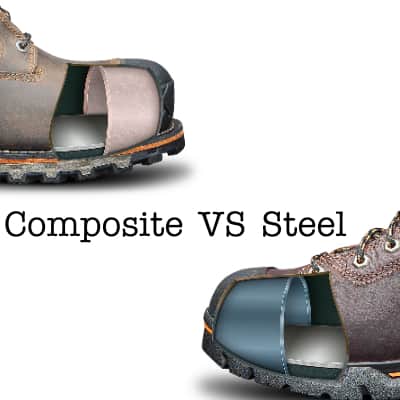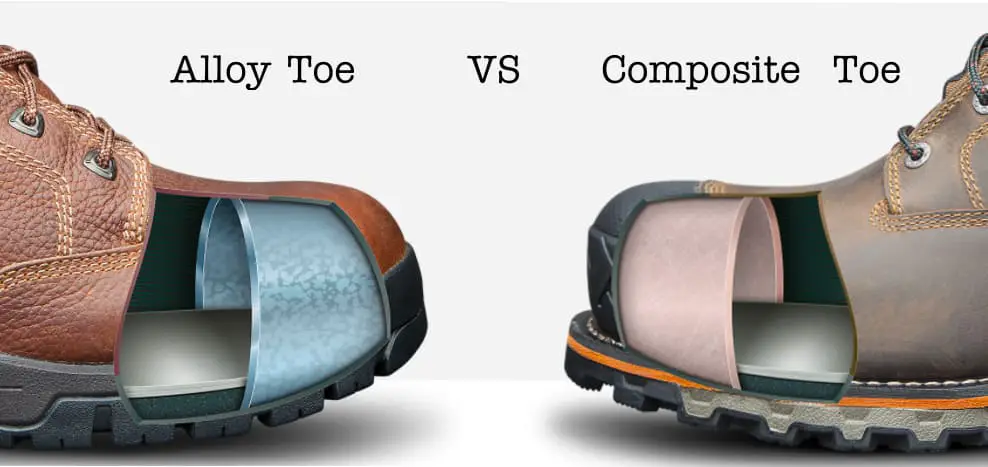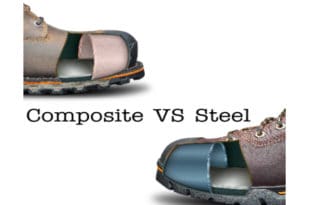What to Look for in a Safety Toe
When it comes to selecting the right safety toe for your work boots or shoes, there are several key factors to consider. The importance of safety toes cannot be overstated, as they provide crucial protection against foot injuries in the workplace. In fact, the National Safety Council estimates that over 60,000 foot injuries occur annually in the United States alone. To mitigate this risk, it’s essential to choose a safety toe that meets your specific needs and job requirements. The two most popular options, carbon fiber toes and composite toes, offer distinct advantages and disadvantages. When deciding between these two materials, consider factors such as material, durability, and comfort. By understanding the differences between carbon fiber toes and composite toes, you can make an informed decision and ensure the right level of protection and comfort for your job.
Carbon Fiber Toe: The Lightweight Champion
Carbon fiber toes have gained popularity in recent years due to their unique benefits. One of the most significant advantages of carbon fiber toes is their lightweight design, making them ideal for workers who require agility and flexibility on the job. Additionally, carbon fiber toes are breathable, allowing for airflow and moisture wicking, which can help keep feet cool and dry. They are also flexible, providing a more comfortable fit and allowing for a greater range of motion. However, carbon fiber toes do come with some drawbacks, including a higher cost compared to composite toes and limited availability in certain products. Despite these limitations, popular products like the Thorogood Composite Toe Work Boot feature carbon fiber toes, offering workers a high-quality, lightweight option. When considering a carbon fiber toe, it’s essential to weigh the benefits against the drawbacks and determine if the added cost is justified by the improved performance and comfort.
Composite Toe: The Affordable Alternative
Composite toes offer a cost-effective alternative to carbon fiber toes, making them an attractive option for workers on a budget. One of the primary advantages of composite toes is their durability, as they are designed to withstand the rigors of heavy use. Additionally, composite toes are easy to clean and maintain, making them a practical choice for workers in industries where cleanliness is essential. However, composite toes do have some drawbacks, including their heavier weight and limited breathability. Despite these limitations, popular products like the Dr. Martens Ironbridge Composite Toe Work Boot feature composite toes, providing workers with a reliable and affordable option. When considering a composite toe, it’s essential to weigh the benefits against the drawbacks and determine if the cost savings justify the potential trade-offs in performance and comfort. In the carbon fiber toe vs composite toe debate, composite toes offer a viable alternative for workers who prioritize affordability and durability.
How to Choose Between Carbon Fiber and Composite Toes
When deciding between carbon fiber and composite toes, it’s essential to consider several key factors. Here’s a step-by-step guide to help you make an informed decision:
Step 1: Assess Your Job Requirements
Determine the specific demands of your job, including the level of impact, compression, and puncture resistance required. If you work in a high-risk environment, such as construction or manufacturing, a carbon fiber toe may be the better choice. However, if you work in a lower-risk environment, such as warehousing or logistics, a composite toe may be sufficient.
Step 2: Evaluate Your Personal Preferences
Consider your personal comfort and fit preferences. If you prioritize a lightweight, breathable, and flexible toe, carbon fiber may be the better option. However, if you prefer a more affordable, durable, and easy-to-clean toe, composite may be the way to go.
Step 3: Set a Budget
Determine your budget for safety toes and weigh the cost against the benefits of each option. If budget is a concern, composite toes may be the more affordable choice. However, if you’re willing to invest in a premium product, carbon fiber toes may be worth the extra cost.
By following these steps and considering the carbon fiber toe vs composite toe debate, you can make an informed decision that meets your unique needs and preferences. Remember to weigh the pros and cons of each option carefully before making a decision.
Comparison of Carbon Fiber and Composite Toes
When it comes to choosing the right safety toe, understanding the differences between carbon fiber and composite toes is crucial. Here’s a side-by-side comparison of these two popular options:
Weight
Carbon fiber toes are significantly lighter than composite toes, making them ideal for workers who need to move quickly and freely. Composite toes, on the other hand, are heavier due to their denser material composition.
Durability
Both carbon fiber and composite toes are designed to withstand heavy use, but they differ in their durability. Carbon fiber toes are more prone to cracking and breaking, while composite toes are more resistant to impact and compression.
Comfort
Carbon fiber toes are known for their breathability and flexibility, making them a comfortable choice for workers who spend long hours on their feet. Composite toes, while less breathable, are still a comfortable option for many workers.
Cost
The cost of carbon fiber toes vs composite toes is a significant factor to consider. Carbon fiber toes are generally more expensive than composite toes, but they offer a range of benefits that may justify the extra cost.
By considering these key differences, workers can make an informed decision about which type of safety toe is best for their needs. Whether you prioritize lightweight comfort, durability, or affordability, there’s a safety toe option available to meet your requirements.
In the carbon fiber toe vs composite toe debate, it’s essential to weigh the pros and cons of each option carefully. By doing so, workers can ensure they’re getting the right safety toe for their job and personal preferences.
Real-World Applications: When to Choose Each
In the real world, the choice between carbon fiber and composite toes depends on the specific industry, job role, and work environment. Here are some examples of when each type of safety toe may be the better choice:
Carbon Fiber Toes:
Construction workers, manufacturers, and those in high-risk industries may benefit from carbon fiber toes. These lightweight, breathable toes provide excellent protection without compromising mobility or comfort. They’re ideal for workers who need to move quickly and freely, such as those on construction sites or in manufacturing facilities.
In addition, carbon fiber toes may be preferred by workers who require a high level of flexibility and dexterity, such as electricians, plumbers, or HVAC technicians. The flexibility of carbon fiber toes allows for a greater range of motion, making them well-suited for jobs that require bending, twisting, or climbing.
Composite Toes:
Warehouse workers, logistics personnel, and those in lower-risk industries may prefer composite toes. These cost-effective, durable toes provide excellent protection at an affordable price. They’re ideal for workers who spend most of their time on their feet, but don’t require the same level of flexibility or mobility as those in high-risk industries.
In addition, composite toes may be preferred by workers who prioritize ease of cleaning and maintenance. Composite toes are generally easier to clean and maintain than carbon fiber toes, making them a practical choice for workers in industries where cleanliness is essential, such as food processing or healthcare.
Ultimately, the choice between carbon fiber and composite toes depends on the specific needs and preferences of the worker. By considering the real-world applications of each type of safety toe, workers can make an informed decision that meets their unique requirements.
In the carbon fiber toe vs composite toe debate, understanding the specific industries and job roles that benefit from each type of safety toe is crucial. By doing so, workers can ensure they’re getting the right safety toe for their job and personal preferences.
Conclusion: Making an Informed Decision
In conclusion, choosing the right safety toe is a crucial decision that depends on a variety of factors, including job requirements, personal preferences, and budget constraints. By understanding the benefits and drawbacks of carbon fiber and composite toes, workers can make an informed decision that meets their unique needs.
When deciding between carbon fiber and composite toes, it’s essential to weigh the pros and cons of each option carefully. Consider the importance of factors such as weight, durability, comfort, and cost in your specific work environment. Don’t be swayed by marketing claims or price tags alone – take the time to research and compare different products to find the best fit for your needs.
In the carbon fiber toe vs composite toe debate, there’s no one-size-fits-all solution. What works for one worker may not work for another. By considering individual needs and preferences, workers can ensure they’re getting the right safety toe for their job and personal requirements.
Ultimately, the right safety toe can make all the difference in preventing foot injuries and ensuring a safe and healthy work environment. By making an informed decision, workers can protect their feet and their livelihoods, while also improving their overall job satisfaction and performance.
Final Thoughts: The Future of Safety Toes
As the demand for safety toes continues to grow, manufacturers are pushing the boundaries of innovation to create even more advanced and effective solutions. One emerging trend is the integration of smart technology into safety toes, allowing for real-time monitoring of foot health and safety. This could potentially revolutionize the way we approach workplace safety, enabling employers to identify and address potential hazards before they become major issues.
Another area of development is the use of sustainable materials in safety toe production. With growing concerns about environmental impact, manufacturers are exploring eco-friendly alternatives to traditional materials. This could lead to a new generation of safety toes that not only protect workers’ feet but also reduce waste and minimize environmental harm.
In the carbon fiber toe vs composite toe debate, it’s clear that both options have their strengths and weaknesses. As the industry continues to evolve, we can expect to see new and innovative solutions that combine the benefits of both materials. Perhaps we’ll see the development of hybrid safety toes that offer the lightweight flexibility of carbon fiber and the durability of composite materials.
Whatever the future holds, one thing is certain – the importance of safety toes in protecting workers’ feet and preventing injuries will only continue to grow. By staying informed about the latest developments and innovations, workers and employers can ensure they’re always one step ahead of the game.









